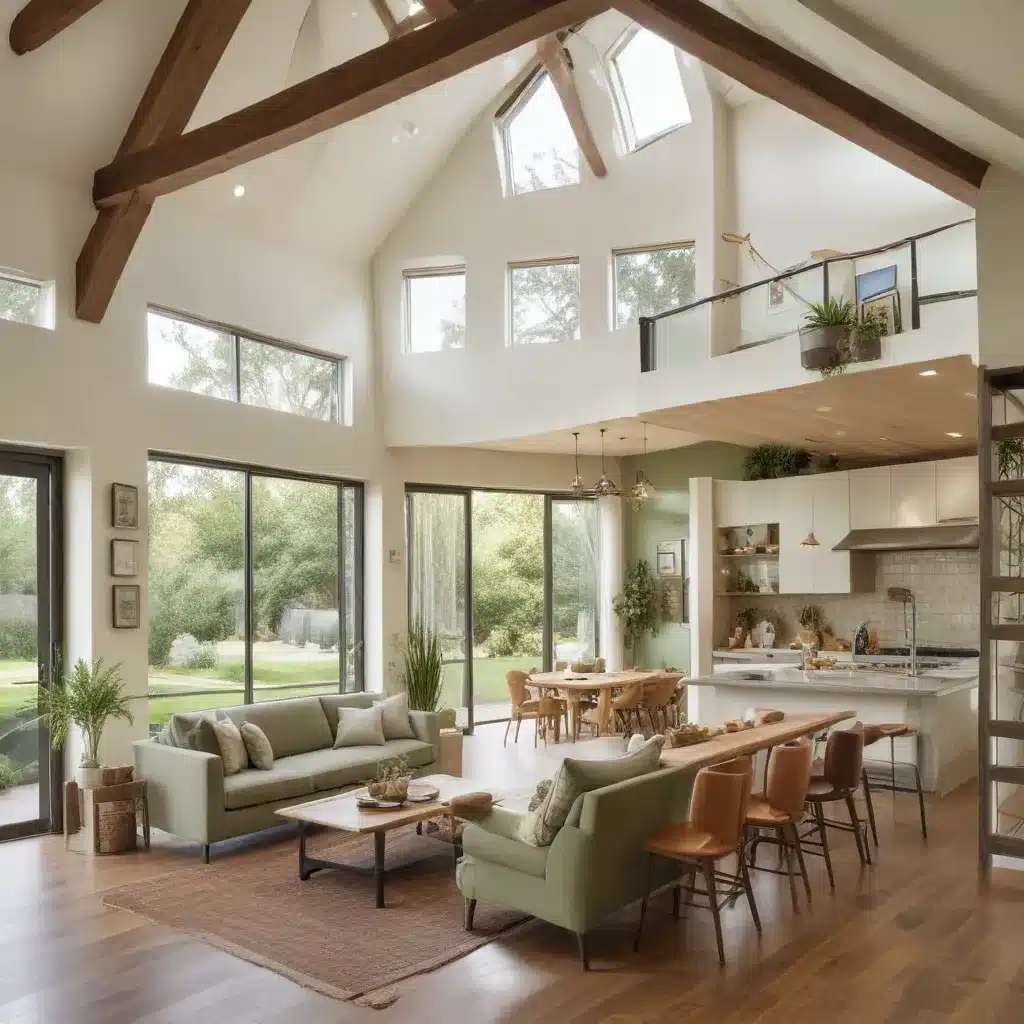As an experienced home improvement consultant, I’m excited to share practical insights on integrating eco-friendly solutions into your home renovation projects. Whether you’re a DIY enthusiast or prefer to work with professional contractors, this comprehensive guide will equip you with the knowledge to create a healthier, more sustainable living space for your family.
Sustainable Living Choices
Embracing renewable energy and making eco-friendly upgrades can have a significant impact on your home’s energy efficiency, environmental footprint, and overall well-being. Let’s explore some of the most impactful sustainable solutions to consider.
Renewable Energy Solutions
One of the most transformative changes you can make is transitioning to renewable energy sources. Solar panels, for example, can dramatically reduce your reliance on the grid and lower your monthly utility bills. While the upfront cost may seem daunting, many state and federal incentives, such as tax credits and rebates, can make solar a more accessible option. Additionally, some utility companies offer net metering programs, allowing you to sell excess energy back to the grid and offset your costs.
Another renewable option to explore is geothermal heating and cooling. This technology taps into the earth’s constant temperature to provide efficient, environmentally friendly climate control for your home. While the installation process can be more complex, geothermal systems offer long-term energy savings and reduced carbon emissions.
Eco-Friendly Home Renovations
Beyond renewable energy, consider incorporating sustainable building materials and energy-efficient upgrades into your home improvement projects. Bamboo flooring, recycled-content countertops, and low-VOC paints are just a few examples of eco-friendly choices that can enhance your home’s environmental impact. Investing in high-performance insulation, Energy Star-certified appliances, and smart thermostat technology can also significantly improve your home’s energy efficiency.
Smart Home Technologies
Integrating smart home automation can further optimize your energy use and contribute to a more sustainable lifestyle. Programmable thermostats, connected lighting systems, and internet-enabled appliances allow you to monitor and manage your home’s energy consumption remotely, leading to reduced waste and lower utility costs.
Green Upgrades for Indoor Wellness
Creating a healthy, comfortable living environment is crucial for you and your family. By focusing on indoor air quality, thermal comfort, and natural lighting, you can enhance the overall wellness of your home.
Improving Air Quality
Ensuring proper ventilation and addressing sources of indoor air pollution, such as volatile organic compounds (VOCs) and mold, can dramatically improve the air quality in your home. Consider installing high-efficiency air filters, heat recovery ventilators, and implementing dry-cleaning methods for carpets and upholstery. The use of low-VOC paints, formaldehyde-free cabinetry, and natural cleaning products can also contribute to a healthier indoor environment.
Promoting Thermal Comfort
Optimizing your home’s thermal envelope through insulation upgrades, high-performance windows, and strategic shading can enhance comfort and reduce energy consumption. Pairing these improvements with efficient HVAC systems and smart thermostat controls can help maintain a consistent, comfortable temperature throughout your living spaces.
Enhancing Natural Lighting
Maximizing the use of natural daylight can have a positive impact on both your energy bills and your overall well-being. Strategic window placement, skylights, and solar tubes can bring more sunlight into your home, reducing the need for artificial lighting and contributing to a brighter, more uplifting atmosphere.
Sustainable Building Materials
The materials you choose for your home renovation projects can have a significant influence on the long-term sustainability and environmental impact of your living space.
Renewable Resources
Opting for renewable building materials, such as bamboo, cork, and reclaimed wood, can reduce the depletion of natural resources and promote a more sustainable construction process. These materials often have a lower carbon footprint and can be sourced from responsibly managed sources.
Recycled and Upcycled Options
Incorporating recycled and upcycled materials into your home renovations is another way to embrace sustainability. Recycled-content countertops, repurposed furniture, and salvaged building materials can add character and reduce waste, all while lowering the environmental impact of your project.
Energy-Efficient Insulation
Ensuring your home is properly insulated is crucial for improving energy efficiency and thermal comfort. Blown-in cellulose, spray foam, and rigid foam board are all highly effective insulation options that can help regulate your home’s temperature and reduce your energy consumption.
Holistic Approach to Healthy Homes
When planning your home renovation, it’s essential to take a holistic approach that prioritizes the health and well-being of you and your family. By considering integrated design strategies, occupant needs, and long-term maintenance, you can create a sustainable living space that will serve you for years to come.
Integrated Design Strategies
Collaborating with design professionals who specialize in sustainable and healthy homes can help you identify opportunities for integrated, whole-house solutions. This approach considers the interplay between various systems, such as indoor air quality, energy efficiency, and water conservation, to optimize your home’s performance and livability.
Occupant Wellbeing Considerations
When making renovation decisions, it’s important to keep the unique needs and preferences of your family in mind. Accessibility features, ergonomic design, and biophilic elements (such as indoor greenery and natural materials) can all contribute to a more family-friendly and wellness-focused living environment.
Maintenance and Longevity
Prioritizing the long-term durability and maintainability of your home’s systems and finishes is crucial for sustainable living. Selecting high-quality materials, implementing preventive maintenance strategies, and considering the lifecycle costs of your upgrades can ensure your green investments continue to pay dividends for years to come.
By embracing a comprehensive, eco-friendly approach to your home renovations, you can create a sustainable, healthy, and beautiful living space that not only benefits the environment but also enhances the well-being of you and your family. To learn more about sustainable home improvement solutions, be sure to visit Reluctant Renovator.




